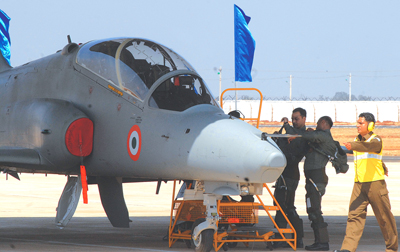INDIAN ARMED FORCES CHIEFS ON OUR RELENTLESS AND FOCUSED PUBLISHING EFFORTS

The insightful articles, inspiring narrations and analytical perspectives presented by the Editorial Team, establish an alluring connect with the reader. My compliments and best wishes to SP Guide Publications.

"Over the past 60 years, the growth of SP Guide Publications has mirrored the rising stature of Indian Navy. Its well-researched and informative magazines on Defence and Aerospace sector have served to shape an educated opinion of our military personnel, policy makers and the public alike. I wish SP's Publication team continued success, fair winds and following seas in all future endeavour!"

Since, its inception in 1964, SP Guide Publications has consistently demonstrated commitment to high-quality journalism in the aerospace and defence sectors, earning a well-deserved reputation as Asia's largest media house in this domain. I wish SP Guide Publications continued success in its pursuit of excellence.
Expert Guidance

Apart from structured in-service training courses, the IAF has introduced newer techniques to enable all personnel to learn on their own.
Teaching is a noble profession but not always very glamorous. In the corporate sector, an HR head is forever asking for a bigger budget to train recruits, retrain them on newer technology or on latest management skills. On the other hand, his production or marketing colleagues are making money for the company—a visible and tangible gain. However, when one considers all the effort and money spent by the HR dept as an investment for better productivity, quality-training programmes become imperative. Over the years, the Indian Air Force (IAF) has innovatively maintained this vital link between training and operations.
Training refers to imparting a skill. While there is emphasis in the IAF to ensure that every air warrior is imparted with requisite skills during the formative years, equally important are the values imbibed by them during training. Learning, however, is a continuous process. Therefore, apart from structured in-service training courses, the IAF has recently introduced newer techniques to enable all personnel to learn on their own.
Historical background
Prior to Independence and up until 1939, the pilots and technical officers inducted into the IAF were trained in UK while the technicians were trained at Aircraft Depot, Karachi under the supervision of British NCOs. At the time of outbreak of World War II in September 1939, the IAF comprised of 16 officers and 144 airmen. Having realised the important role IAF could play in the eastern theatre of war, it was rapidly expanded to 10 squadrons, which necessitated requirement of additional pilots and technical personnel. It was, therefore, decided to create training facilities in the country itself. While initial training for the officers was carried out at Walton in Lahore, the flying training was set up at Risalpur and technical training at Ambala. More facilities were later added at Jodhpur, Jalahalli, Tambaram and Coimbatore. At the time of partition, the IAF inherited five of these training schools:





